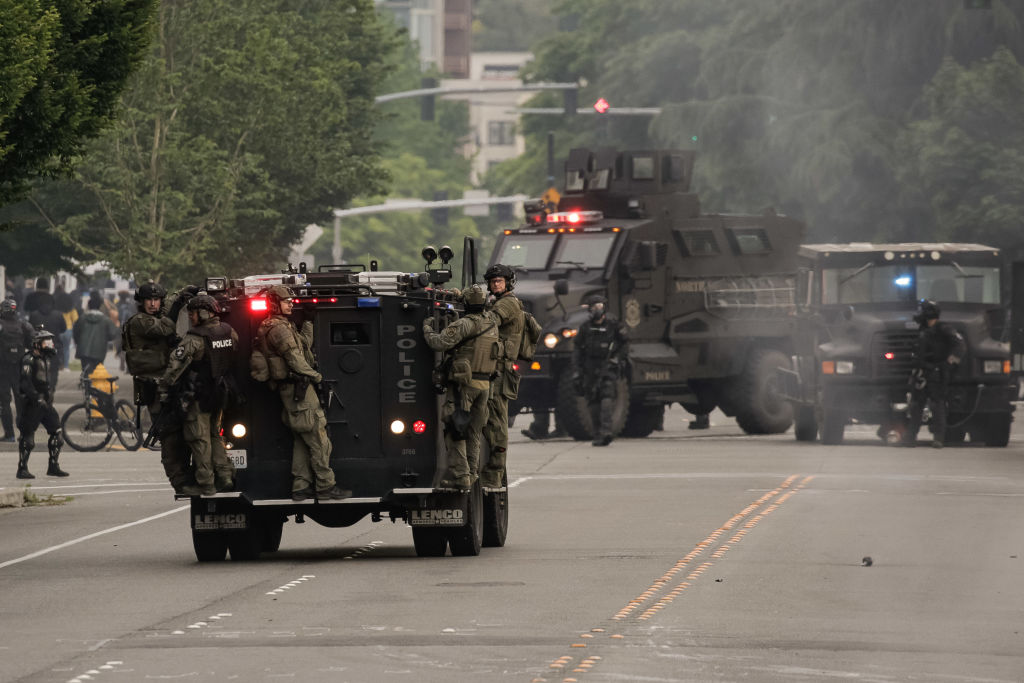
Perhaps with unintentional irony, US President Donald Trump said in a recent national address that America ‘needs creation, not destruction; cooperation, not contempt; security, not anarchy; healing, not hatred; justice, not chaos’. In any community, policing is essential to realising these goals. Police, however, can only be effective with community support and acceptance of their role.
Police and the communities they serve have an unspoken contract. For peace and wellbeing, the community gives police permission to use coercive force in certain circumstances. But communities in return expect police to be accountable for their exercise of that power. With the death of George Floyd and the riots that followed, this contract between the community and police has been undermined and weakened.
The cause of the recent demonstrations ultimately traces back to America’s original sin of slavery and the historic failures of its institutions and systems to address entrenched racism and inequality. However, current policies have contributed to, and inflamed, these events, calling into question the US model of policing—particularly the overt militarisation.
The process starts with the recruitment of ex-military personnel through programs that have no counterparts in Australia. To attract recruits, the Los Angeles Police Department, like many others, provides additional benefits that are supported by national veterans’ programs under the GI Bill. Former military personnel bring important skills like teamwork, discipline and proficient use of weapons, but it’s not easy for them to transition from ‘warriors to guardians’. Their training and experience embed a mindset that doesn’t always align well with the requirements of community policing.
Recruitment and training standards are relatively consistent across Australia’s states and territories. This approach is assisted by the small number of police services, eight in total, and the large scale of those services compared with the American average. In the US there are more than 12,000 local police services, which vary significantly in size depending on the size of the communities that support them. Consequently, recruitment, transition programs and training standards vary greatly.
Police training in the US has also been subject to militarisation. The 1981 Military Cooperation with Civilian Law Enforcement Agencies Act allows the US armed forces to cooperate with and assist domestic law enforcement agencies in areas such as counterdrug operations, civil disturbances, special security operations, counterterrorism and explosive ordnance disposal. This work necessitates joint training activities during which ideas and tactics are exchanged. Of course, in the US context, the proliferation of high-powered weapons in the community understandably provides a difficult working environment.
There are benefits to police engaging in joint training activities with military personnel, but there can also be negative consequences if these tactics and use of force are applied inappropriately, as we saw in some cases during the recent large protests in the US. In 2019, John Sutton, a lawyer and former Australian Defence Force officer, raised similar concerns about frontline and specialist police teams being trained in military-style tactics and thinking in Australia.
The militarisation of police continues with the US Department of Defense’s 1033 program, which provides, free of charge, surplus military equipment to civilian police forces across America. That includes military-grade weapons, night-vision goggles and armoured vehicles more appropriate to a war zone. One study suggested that there’s a ‘statistically significant relationship between 1033 transfers and fatalities from officer-involved shootings’. Another found that ‘the increased use of military equipment has coincided with an increased use of military tactics, such as SWAT teams and no-knock raids’. A similar program operates in Australia through the national counterterrorism funding program, but the use of such equipment here is not limited to counterterrorism activities.
Another change in policing is the introduction of military-style uniforms. Studies suggest that what police wear has a strong psychological influence on how people perceive them. Uniforms denote power and authority, but these perceptions can be influenced by the colour of the material used. Darker police uniforms, such as the black clothing widely used in America and increasingly in vogue in Australia, send negative subconscious signals to citizens. These signals are exacerbated by the increasingly militaristic tactical vests and equipment worn by police; police should be approachable, not intimidating.
Concerns have been raised about the impact of post-traumatic stress disorder on police. PTSD rates vary among veterans depending on the conflict in which they served, but it’s estimated that 11% to 20% of US veterans suffer from PTSD in a given year. The estimated prevalence of PTSD in the general adult population is much lower, at around 6.8%. Given the stigma associated with PTSD, it’s likely that these figures under-represent the extent of the problem and that the under-reporting continues into future employment. In stressful situations the red mist of anger can descend, making it difficult to determine what is an appropriate use of force and police powers. The overlay of PTSD, in violent confrontations, can exacerbate this problem.
The violent clashes in the US have highlighted that communities and some police are unsure what environment they’re operating in. The concept of community policing, and the role of police in the community, need to be clearly defined and distinguished from a military model of operation. Police must be trained to understand that the powers the community bestows on them are a privilege, not a right. When officers abuse their powers, that trust is fractured.
Policymakers, in consultation with their communities, must consider whether they want a respectful and lawful interplay between community and police or are willing to see communities become battlegrounds. Unfortunately, America may have reached a point where many police departments have become akin to military forces in their communities, resulting in a loss of legitimacy and trust. We must be vigilant to ensure that the same thing doesn’t happen in Australia.
Policy implementation and review, accountability and leadership have direct roles to play in setting the parameters for what communities expect of their police services. I’ll explore those themes in my next post.

